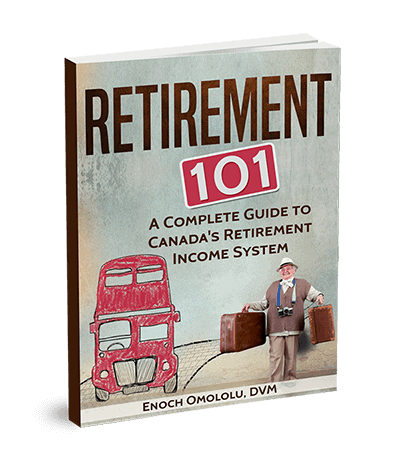An Overview of Government Benefits For Retired Seniors in Canada
Updated January 9, 2021
There are a number of federal and provincial programs and benefits that complement other sources of income seniors have in retirement. When it comes to how much you will need to retire comfortably, there is no easy answer. This is because individuals have to consider factors that are peculiar to them in addition to other broader considerations.
In general, the consensus is that you want to have around 70% or so of your pre-retirement income to ensure you can pay for typical needs in retirement.
There are a number of other popular rules of thumb on how to calculate your retirement income needs, such as the 4% withdrawal rate, income multiples, and so on. You can read more about these assumptions here.
How much money do seniors get in Canada? Read on to find out.
Table of Contents
Federal Programs and Retirement Income Benefits for Seniors
Following the initial introduction of The Annuities Act in 1908, Canada has come a long way when it comes to retirement benefits. On the federal level, we now have the Old Age Security (OAS) pension (plus Guaranteed Income Supplement – GIS) and the Canada Pension Plan (CPP)/Quebec Pension Plan (QPP).
The OAS and CPP are often referred to as Pillar 1 and Pillar 2 of Canada’s retirement income system respectively. In the light of a senior’s total income in retirement, the OAS and CPP are expected to cover approximately 40% of their retirement income.
Let’s look at what these benefits offer:
1. Old Age Security (OAS)
OAS was first introduced in 1927. It is a monthly benefit that is paid to seniors who are 65 years of age or older and who are either citizens or legal residents of Canada. There is no employment history requirement for the OAS and you do not need to make any contributions. Applicants must have lived in Canada for at least 10 years after the age of 18.
The amount of OAS benefit you qualify for is prorated based on how long you have lived in Canada as an adult. To qualify for the maximum OAS amount, you should have resided in Canada for 40 years or more (after age 18).
If for example, you have lived in Canada for 20 years before turning 65, you will receive half of the full OAS pension (i.e. 20/40 x OAS pension). The current maximum monthly OAS benefit is $615.37.
OAS benefit amounts are reviewed every quarter in January, April, July, and December to ensure they keep up with the inflation rate. Seniors can choose to delay when they start receiving OAS (for up to 5 years) in order to qualify for a higher amount.
Further reading:
2. Guaranteed Income Supplement (GIS)
The GIS is a part of the OAS program and is a top-up payment available to low-income seniors.
To qualify for the GIS, you must already be receiving OAS, reside in Canada, and your annual income must be below the income threshold set by the government. If you have a spouse or common-law partner, your combined income is used to determine your eligibility.
GIS payments are not taxed and benefits are revised every quarter. For the current GIS payment amounts, check out this table here.


3. Allowance and Allowance for the Survivor
Allowance: This is a monthly benefit under the OAS program that is paid to low-income seniors who are between 60 and 65 years of age and whose spouse or common-law partner is a recipient of the OAS and GIS. An Allowance payment is a stop-gap benefit until you turn 65 and become eligible for OAS.
Your income and that of your spouse are considered in calculating how much Allowance benefit you qualify for. The current maximum Allowance benefit is $1,168.65 per month.
Allowance for the Survivor: This benefit is similar to the Allowance. It is a monthly supplemental benefit paid to low-income seniors who are aged between 60 and 64 years and whose spouse/partner has died.
The current maximum Allowance for the Survivor amount is $1,393.08. Payments stop when you reach 65 years of age.
Further reading: Understanding GIS, Allowance and Allowance for the Survivor
4. Canada Pension Plan (CPP/QPP)
The CPP was introduced in 1966. Unlike the OAS, the CPP is a contributory program that individuals contribute to during their working years based on contribution rates set by the government every year.
You can start claiming CPP benefits from age 60 (reduced benefits), or wait till age 65 to receive full CPP pension. Seniors can also choose to delay when they take CPP benefits for up to 5 years, at which time they receive a higher monthly CPP benefit.
To qualify for CPP benefits, you must have worked in Canada and made at least one CPP contribution. The amount of CPP you will receive in retirement is based on how much you and your employer contributed to the plan, the number of years you contributed, and the age at which you start collecting CPP benefits.
CPP benefit amounts are revised annually to account for inflation. The current maximum monthly CPP benefit is $1,203.75.
Further reading: Everything You Need to Know about the CPP
In addition to the CPP retirement pension, there are a few other benefits available to seniors under the CPP…
5. CPP Post-Retirement Benefits (PRB)
If as a senior who is receiving the CPP retirement pension, you decide to continue working and contributing to the CPP program, you will receive an increase in your monthly CPP pension.
Essentially, when you contribute to the CPP between age 60 and 70 and are receiving the CPP, you will earn a post-retirement benefit. You cannot make any further CPP contributions after age 70.https://2a6ddb6ec152aa40658d7557c0504b56.safeframe.googlesyndication.com/safeframe/1-0-38/html/container.html

6. CPP Survivor Benefits
This is a monthly benefit that is paid to the spouse or partner of a CPP contributor who has died. The amount you receive depends on how much was contributed to the plan, your age, and the other benefits you are receiving.
The current maximum monthly CPP survivor’s pension is $650.72 (under age 65) and $722.25 (over 65 years).
7. CPP Death Benefit
This is a one-time payment to the estate of a CPP contributor after they die. The maximum CPP death benefit payable is $2,500.
Further reading: CPP and OAS Survivor Benefits
8. International Pension Benefits
Seniors who lived or worked in another country may be able to receive their pension benefits in Canada if there is a social security agreement between that country and Canada. If you are unsure how this process works, contact Service Canada for more information.
For provincial benefits available to seniors in retirement, check out this post.
Related Posts:
- Factors to Consider When Choosing Between RRSP vs TFSA
- A Complete Guide To Retirement in Canada
- LIRA, LIF, LRSP, LRIF, PRIF and What They Mean
- Understanding Annuities in Retirement Planning
Investing: Investing doesn’t have to be so expensive! For low-fees (as low as 0.4%), no-hassle investing, try Wealthsimple today. You get a $50 cash bonus when you open a new account.ADVERTISEMENTS
Hot Credit Card Deals This Month:
- This brand-new Visa offers 40,000 bonus points + first year free
- Earn 5x the points on dining, groceries, gas, and daily transit.
- 40,000 point welcome bonus worth up to $284.
- Annual lifestyle credit of $50 that can be used anyway you like.
- Earn 10% more points when you add an authorized user to the account.
- Annual fee of $120, which is waived for the first year.
- Best overall credit card in Canada for 4 years in a row
- Get double the rewards value compared to most cash back cards.
- Earn up to $788 in rewards as a welcome bonus in the first year.
- 5x points on groceries and dining.
- 2x points on travel, transit and gas purchases.
- Monthly fee of $10 instead of an annual fee.
- Enjoy benefits and rewards of up to $1,100 in the first year*
- Earn $300 cash back when you spend $4,000 in the first 3 months – ends April 30, 2021.
- Up to 1.5x the points on the first $40,000 in annual purchases.
- Save up to $250 yearly on travel fees like checked bags with any airline. and seat selection.
- Unlimited access to the National Bank Montreal-Trudeau lounge for the cardholder and a guest.
- Top notch insurance coverage, plus rare triple extended warranty on your purchased items.
- Have you found your #1 card? Take the challenge


Join Our Newsletter!
Sign up now to join thousands of other visitors who receive our bi-weekly newsletter and latest personal finance tips. You will also receive our FREE eBooks.SUBSCRIBESharePinTweetWhatsAppRedditShare78SHARES
AUTHOR
Enoch Omololu
Enoch Omololu is a personal finance expert and a veterinarian. He has a master’s degree in Finance and Investment Management from the University of Aberdeen Business School (Scotland) and has completed several courses and certificates in finance, including the Canadian Securities Course. He also has an MSc. in Agricultural Economics from the University of Manitoba and a Doctor of Veterinary Medicine degree from the University of Ibadan. Enoch has a passion for helping others win with their personal finances and has been writing about money matters for over a decade. His writing has been featured or quoted in the Toronto Star, The Globe and Mail, MSN Money, Financial Post, Winnipeg Free Press, CPA Canada, Credit Canada, Wealthsimple, and many other personal finance publications.
His top investment tools include Wealthsimple and Questrade. He earns cash back on purchases using KOHO and monitors his credit score for free using Borrowell.
You May Also Like…
 Understanding the Old Age Security (OAS) PensionApril 4, 2021
Understanding the Old Age Security (OAS) PensionApril 4, 2021 How To Save For Retirement in CanadaFebruary 5, 2021
How To Save For Retirement in CanadaFebruary 5, 2021 16 RRSP and TFSA Mistakes You Should Avoid When Saving For RetirementJanuary 16, 2021
16 RRSP and TFSA Mistakes You Should Avoid When Saving For RetirementJanuary 16, 2021 Guaranteed Income Supplement, Allowance and Allowance for the Survivor (Updated for 2021)April 3, 2021
Guaranteed Income Supplement, Allowance and Allowance for the Survivor (Updated for 2021)April 3, 2021
Recent Posts
- What is an RRIF and how does it work?
- Understanding the Old Age Security (OAS) Pension
- Retirement Planning in Canada: A Complete Guide
- How To Save For Retirement in Canada
- 5 Reasons To Delay Taking CPP Until Age 70
Freebies and Deals

Get a 2.30% rate on your TFSA…up to 30x more than other banks!

FREE credit score and report provided weekly!

Invest for cheap with Wealthsimple plus a $75 cash bonus!

